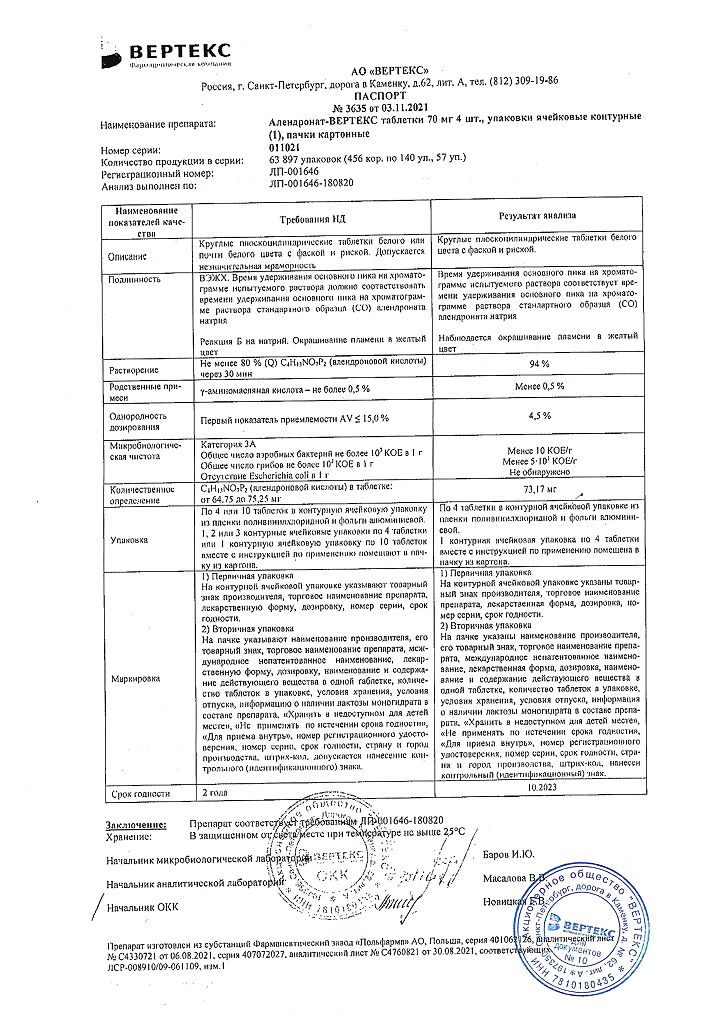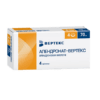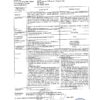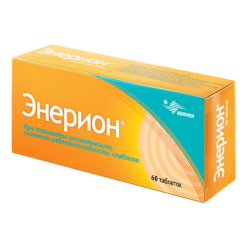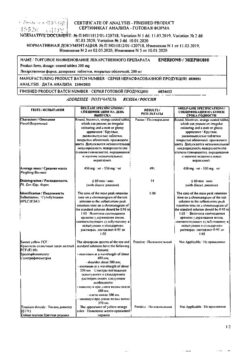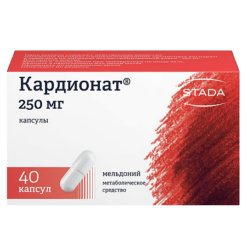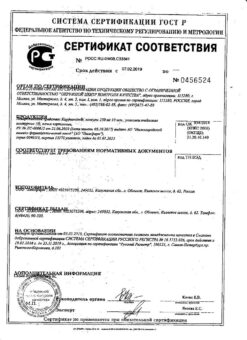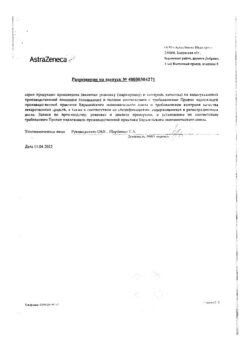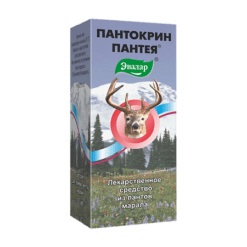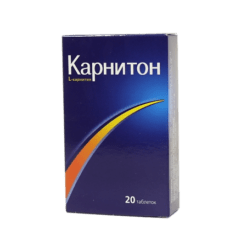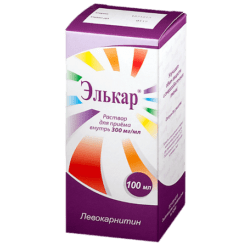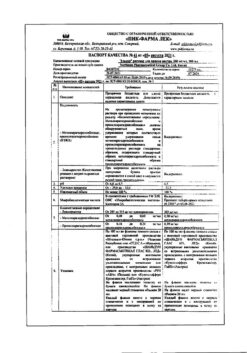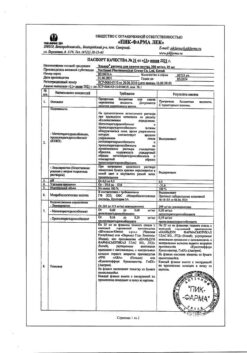No products in the cart.
Alendronate-Vertex, tablets 70 mg 4 pcs
€12.10 €10.59
Description
Alendronate is an inhibitor of bone resorption.
Aminobisphosphonate is an analogue of pyrophosphate.
The mechanism of action is connected with inhibition of osteoclast activity.
It restores positive balance between bone resorption and regeneration, progressively increases bone mineral density (regulates phosphorus-calcium exchange), promotes formation of bone tissue with normal histological structure.
Indications
Indications
– osteoporosis in postmenopausal women (prevention of bone fractures, including the hip and spine);
– osteoporosis in men;
– osteoporosis caused by long-term use of glucocorticosteroid drugs; Paget’s disease.
Pharmacological effect
Pharmacological effect
Alendronate is a bone resorption inhibitor.
Aminobisphosphonate is an analogue of pyrophosphate.
The mechanism of action is associated with the suppression of osteoclast activity.
Restores a positive balance between bone resorption and restoration, progressively increases bone mineral density (regulates phosphorus-calcium metabolism), promotes the formation of bone tissue with a normal histological structure.
Special instructions
Special instructions
Absorption of bisphosphonates is significantly reduced when administered concomitantly with food.
To reduce the irritating effect on the esophagus, Alendronate should be taken immediately after getting up in the morning with a full glass of water. After administration, you should be in an upright position (standing or sitting) for 30 minutes (it is dangerous to use the drug if the patient is unable to stand or sit straight for the specified time). Taking Alendronate before bed or in a horizontal position increases the risk of developing esophagitis.
The patient should be informed of the need to stop taking Alendronate and consult a doctor if dysphagia develops, pain when swallowing, chest pain or heartburn occurs.
In case of hypocalcemia, it is necessary to correct it before starting treatment. It is also necessary to eliminate mineral metabolism disorders that lead to hypocalcemia (vitamin D deficiency, hypoparathyroidism, calcium malabsorption). Therapy should be carried out against the background of a diet enriched with calcium salts.
When taking bisphosphonates (especially with concomitant therapy with glucocorticosteroid drugs), it is necessary to ensure the intake of adequate amounts of calcium and vitamin D from food or in the form of medications.
During treatment, due to the positive effect of alendronic acid on bone mineral density, a slight asymptomatic decrease in the concentration of calcium and phosphate in the blood serum may be observed.
Before prescribing bisphosphonate therapy, patients with underlying risk factors (eg, cancer, chemotherapy, radiation therapy, corticosteroids, poor oral hygiene) should undergo a dental examination with appropriate preventative dental treatment. Patients being treated with bisphosphonates should avoid invasive dental procedures whenever possible. Osteonecrosis of the jaw, usually associated with tooth extraction and/or local infection (including osteomyelitis), has been reported in cancer patients receiving intravenous bisphosphonates (many of whom were also prescribed chemotherapy and corticosteroids). There are reports of the development of osteonecrosis of the jaw in patients with osteoporosis during the use of oral bisphosphonates.
In patients with osteonecrosis of the jaw who are on bisphosphonate therapy, dental surgery may worsen the condition. If surgical interventions are necessary, it should be taken into account that there is no data on the possibility of reducing the risk of developing osteonecrosis of the jaw after discontinuation of a bisphosphonate.
Prescriptions and recommendations of the attending physician should be based on an individual assessment of the benefit/risk ratio for each patient.
Active ingredient
Active ingredient
Alendronic acid
Composition
Composition
1 tablet contains:
Active substance:
alendronic acid 70 mg;
Excipients:
corn starch,
lactose (milk sugar),
magnesium stearate,
MCC.
Contraindications
Contraindications
– hypersensitivity to the components of the drug;
– hypocalcemia;
– the patient’s inability to remain in an upright position (stand or sit upright) for at least 30 minutes;
– severe renal failure (creatinine clearance less than 35 ml/min);
– severe disorders of mineral metabolism;
– strictures or achalasia of the esophagus and other conditions leading to difficulty moving food through the esophagus;
– severe hypoparathyroidism;
– calcium malabsorption;
– lactose intolerance, lactase deficiency, glucose-galactose malabsorption;
– pregnancy;
– lactation period;
– childhood age.
With caution
Diseases of the gastrointestinal tract (GIT) in the acute phase (dysphagia, esophagitis, gastritis, duodenitis, gastric and duodenal ulcers), vitamin D deficiency.
Side Effects
Side Effects
From the gastrointestinal tract: dysphagia, esophagitis, abdominal pain, heartburn, dyspepsia, constipation, diarrhea, flatulence. Rarely – nausea, vomiting, gastritis, melena, esophageal stricture, ulcers of the oral mucosa and pharynx, esophageal ulcer, perforation of esophageal ulcer with bleeding.
From the musculoskeletal system: pain in bones, muscles and joints. From the nervous system: headache. From the organ of vision: uveitis, scleritis.
Allergic reactions: rarely – urticaria, angioedema; Isolated cases of Stevens-Johnson and Lyell syndromes have been reported.
Others: rash, itching, erythema, photodermatosis, symptomatic hypocalcemia. Cases of the development of osteonecrosis of the upper and lower jaw have been described, mainly in patients with cancer during antitumor treatment, including bisphosphonates. Risk factors for the development of osteonecrosis are cancer, chemotherapy, radiation therapy, treatment with glucocorticosteroids, insufficient oral hygiene, local infectious and inflammatory process, including osteomyelitis. In most of the described cases, patients underwent tooth extraction during treatment with bisphosphonates.
Laboratory data: slight and transient decrease in calcium and phosphate concentrations.
Typical symptoms at the beginning of treatment are myalgia, malaise and, rarely, fever.
Storage conditions
Storage conditions
In a place protected from light, at a temperature not exceeding 25 °C.
Shelf life
Shelf life
2 years
Manufacturer
Manufacturer
Vertex, Russia
Additional information
| Shelf life | 2 years |
|---|---|
| Conditions of storage | In a light-protected place at a temperature not exceeding 25 °C. |
| Manufacturer | Vertex, Russia |
| Medication form | pills |
| Brand | Vertex |
Related products
Buy Alendronate-Vertex, tablets 70 mg 4 pcs with delivery to USA, UK, Europe and over 120 other countries.


